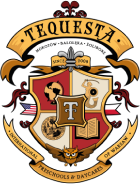Language development and early reading skills form the foundation of a child’s entire future education. Therefore, many parents wonder at what age it’s best to introduce their Little One to the world of letters and words. At TEQUESTA International Preschool & Daycare of Warsaw, we emphasize that every child develops at their own pace and requires a personalized approach. Our aim is to make reading instruction both enjoyable and stimulating, rather than a source of stress or pressure.
What Does “Reading Readiness” Mean?
A key concept here is so-called “school readiness.” It refers to a stage when a child can focus attention on short tasks, distinguish between objects and images, and begins to understand that words consist of letters or sounds. This stage sometimes appears around ages four or five, and in other children only at six. It’s important not to rush it and to trust a child’s natural developmental rhythm.
Observation and an Individual Approach
The first step is careful observation. Does your child like to flip through books, ask questions about signs or inscriptions? Or do they try to “read” illustrations, creating their own versions of a story? Such curiosity suggests that they may be ready for initial reading exercises. The key factor here is intrinsic motivation—without it, learning can become an unpleasant chore.
How to Introduce a Child to the World of Reading?
- Play With Words
At TEQUESTA, we focus on learning through play. Rhymes, short poems, or word games help build vocabulary. Children can learn letters, for example, using colorful building blocks or through songs that clearly emphasize different sounds. - Surround Your Child With Books
It’s a good idea to create a reading corner at home. Even if your child can’t read on their own yet, looking at illustrations fosters imagination and vocabulary building. Reading at bedtime or during free time also helps strengthen the parent-child bond. - Practice Recognizing Letters
When your Little One starts noticing that words are sequences of characters, you can introduce basic alphabet exercises. Colorful charts or movement-based games help reinforce letter shapes. It’s important to give every child the space to make mistakes and learn at their own pace. - Read Together
Sharing reading time, even if just for a few minutes a day, accustoms your child to sentence structure and new words. It also creates a lovely family ritual, encouraging them to reach for books in the future.
Bilingualism and Learning to Read
In our international preschool, children are exposed to English from a very young age. This way, they become familiar with the “melody” of a different language and grow their vocabulary naturally. Parents sometimes worry that learning to read in two languages might be too difficult. Our experience shows that parallel reading instruction in the native language and in English can proceed smoothly, as long as children remain joyful and curious about discovering new words.
The Importance of Early Support
At TEQUESTA, we place enormous value on nurturing natural curiosity. Children then develop not only linguistic skills, but also logical thinking and creativity. Early reading instruction doesn’t have to involve rigid exercises; it can be based on spontaneous play and exploring the environment. In a safe setting, where mistakes are part of learning, children gain more confidence and are more eager to take on new challenges.
When to Begin?
There’s no single rule—some children show readiness to recognize letters as early as age four, while others do so a bit later. Generally, around ages five or six, a Little One can focus on short exercises and understand the structure of words. At TEQUESTA, we recommend closely observing signs that a child is interested in discovering letters and introducing reading in a natural way, adapted to their developmental pace.
The Role of Parents
Parents play a key role here. Daily reading of fairy tales or stories, asking questions, and looking at illustrations together help a child see reading as a pleasure rather than a chore. In this way, motivation grows, along with a positive attitude toward further learning.
The moment when a child starts learning to read may vary, but what matters most is to notice their cues and respond when they show an interest in letters. Pressure or comparisons with peers can unfortunately be discouraging. At TEQUESTA International Preschool & Daycare of Warsaw, we provide an atmosphere of freedom and acceptance, allowing every child to develop their passions and experience the joy of discovering the written word. We are certain that such an introduction will lead to easier adaptation to further education—whether in Poland or at the best international schools.
If you would like more tips or want to discuss your child’s individual readiness to start reading, we encourage you to contact our team. With many years of experience working with children, we are here to help find the path that best meets individual needs. We support parents in creating a unique developmental environment, where children learn, play, and acquire the competencies they need in a dynamic, global world.


